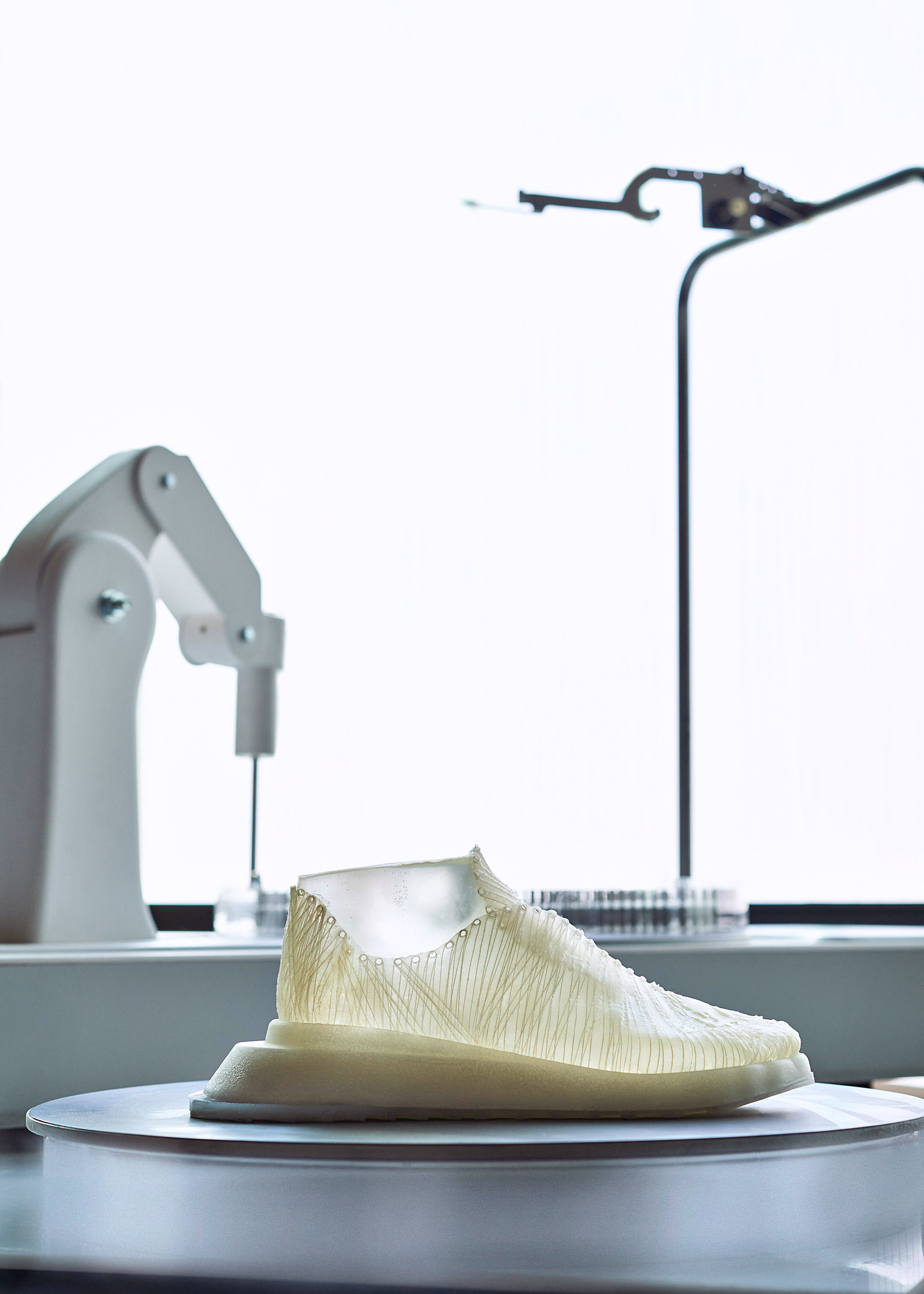This is grown. / Bioweave
“How could we collaborate with microbes to weave a new generation of hybrid materials?”
With microplastic pollution, growing land and water scarcity and over-consumption, we have a real material problem. We need to find another way of making and everyone is looking at biotech for a solution. But what does the future of bio-facture really look like?
This is Grown. employs an organism-driven approach to material design, merging modern industrial textile practice with future biotech principles to propose an alternate future where a better understanding of microorganisms could help us not just replace petrochemical based materials but change our entire approach to making.
By manipulating the growing process of k. rhaeticus bacteria, a new form of ‘microbial weaving’ is developed, working with microbes like bacteria and yeast to optimise the natural properties of bacterial cellulose and create a new category of hybrid materials that are strong, lightweight and potentially customisable to a nanoscale.
In context to traditional weaving, Jen is doing the warp, and the bacteria are growing the weft. But because the bacteria are so small you don’t have the same restrictions of directionality that you would have with a traditional loom, you have quite a bit more control over the material properties and you need less yarn.
The really interesting part will come when we employ synthetic biology to control the types of fibres the microbes produce and how and where they grow them. But as we begin to exercise our new knowledge of nature to try and solve our material problems, we have to question what is natural really, and accept that we may not actually be collaborating with nature anymore but controlling it.


